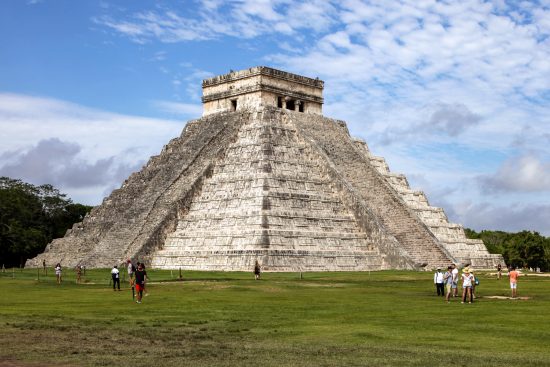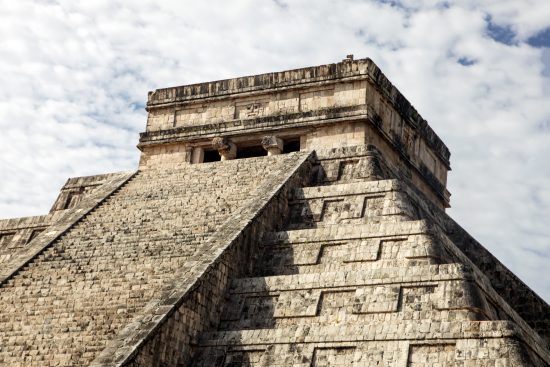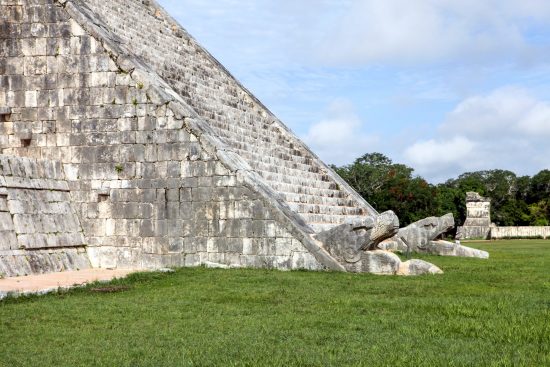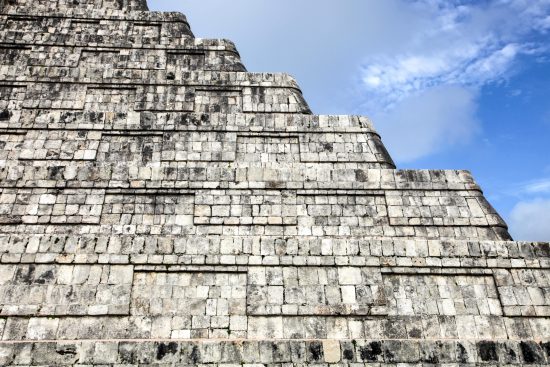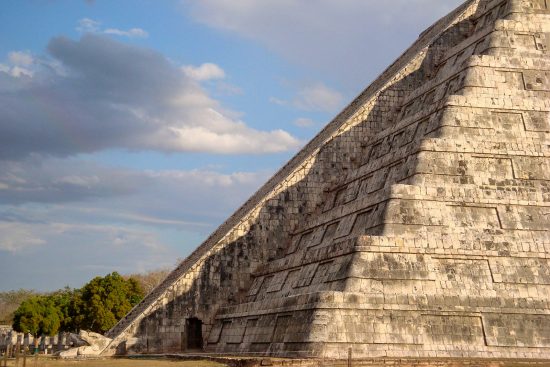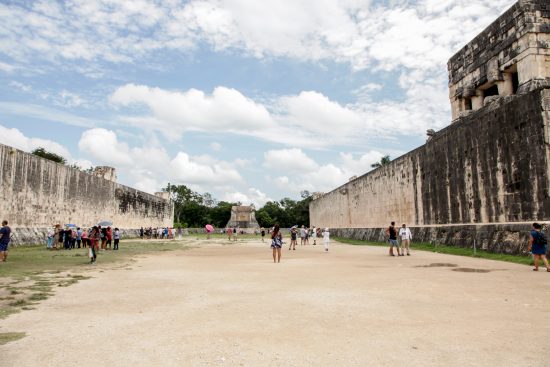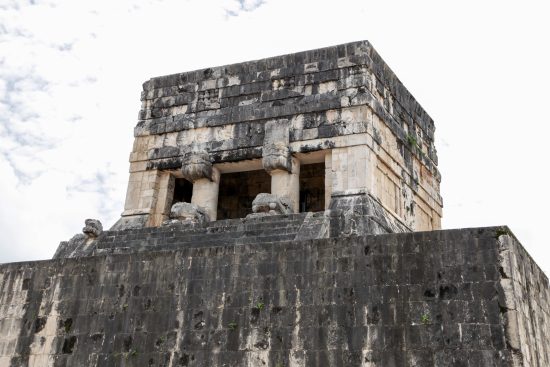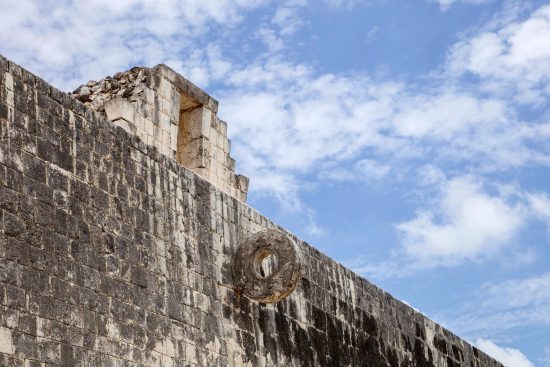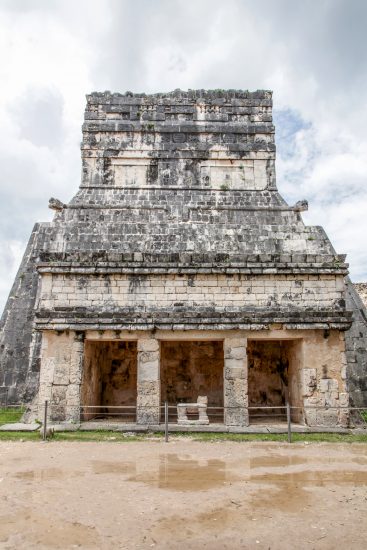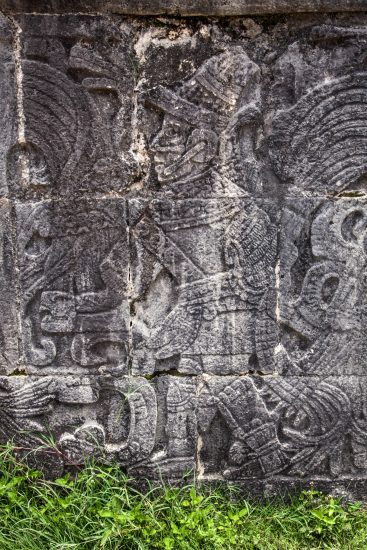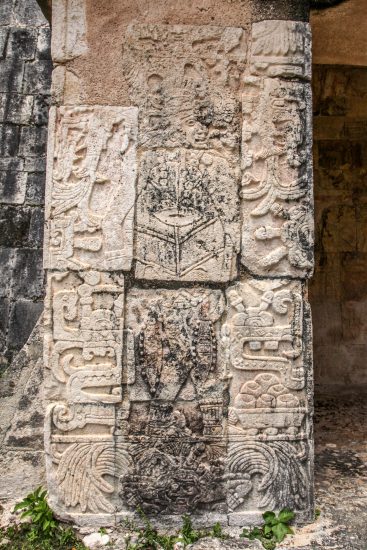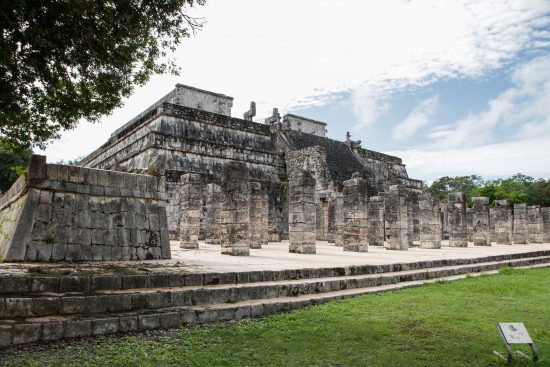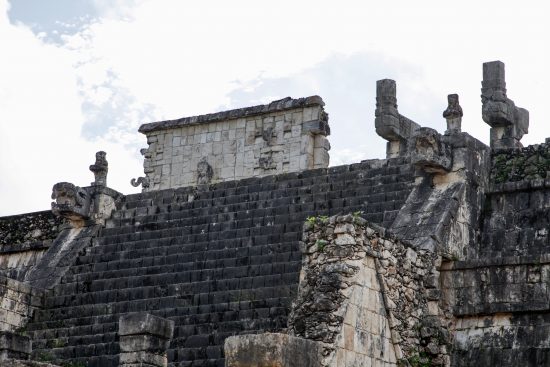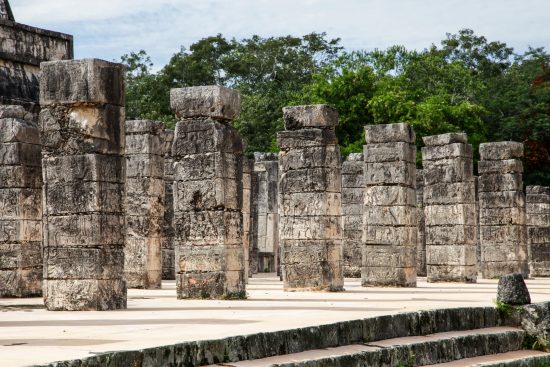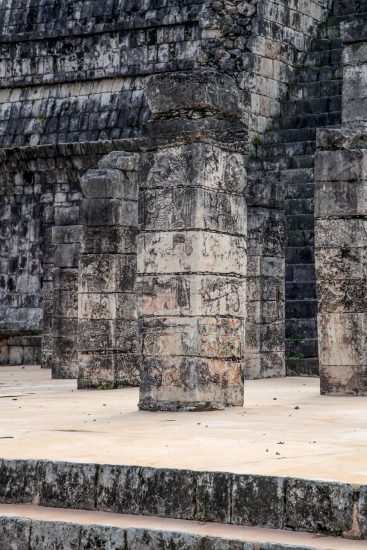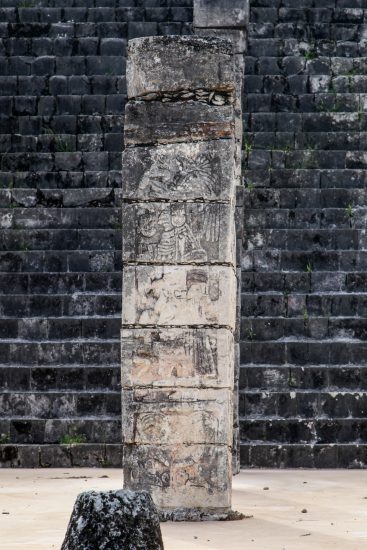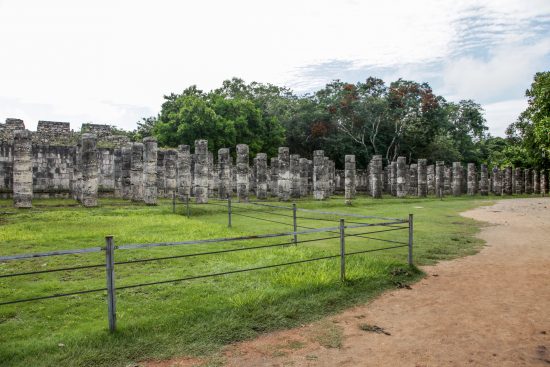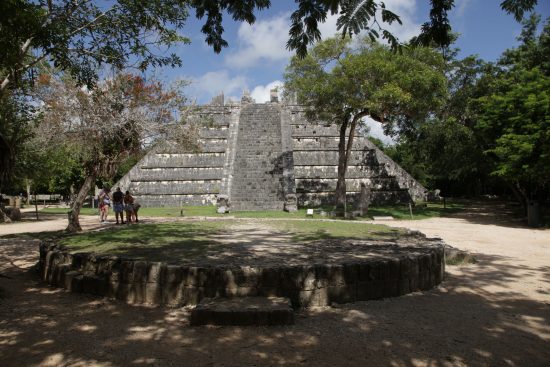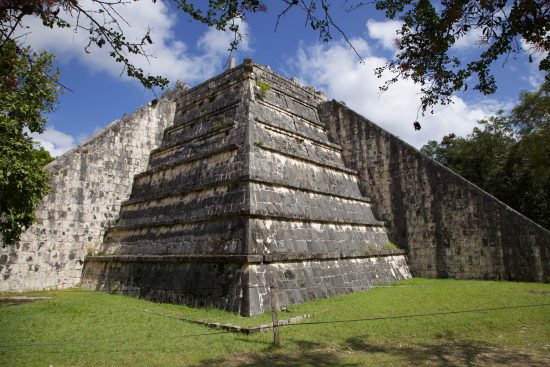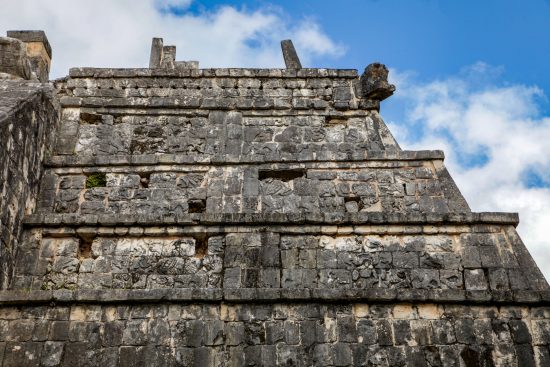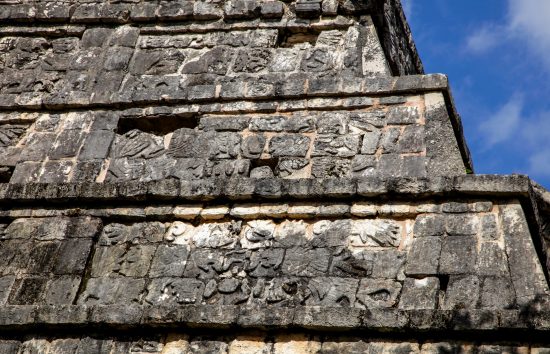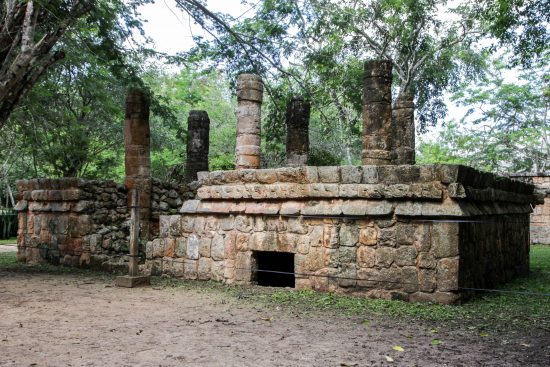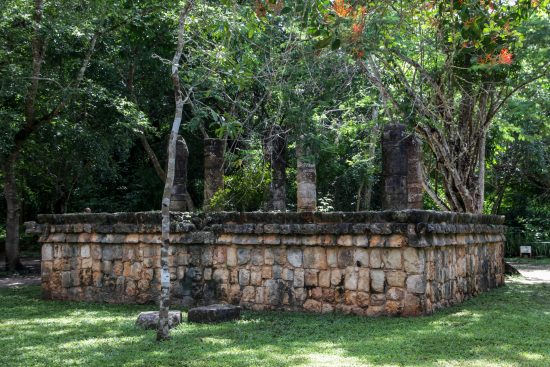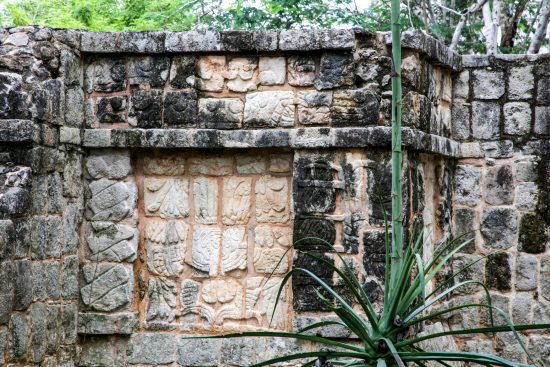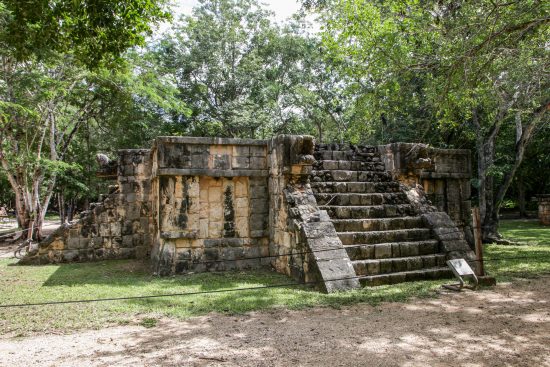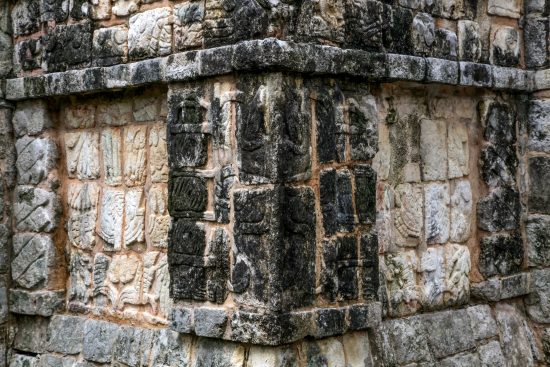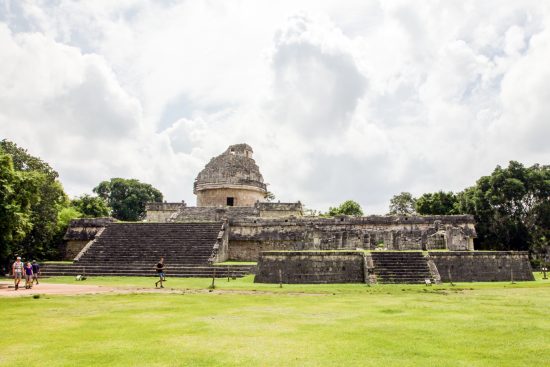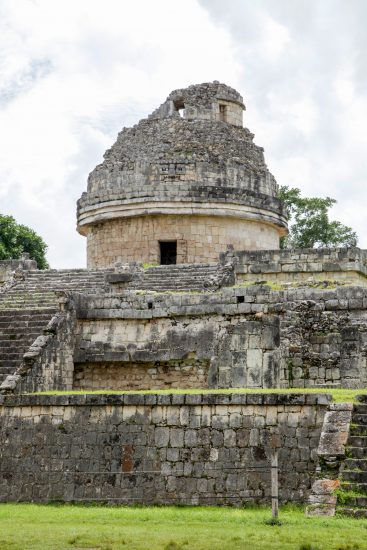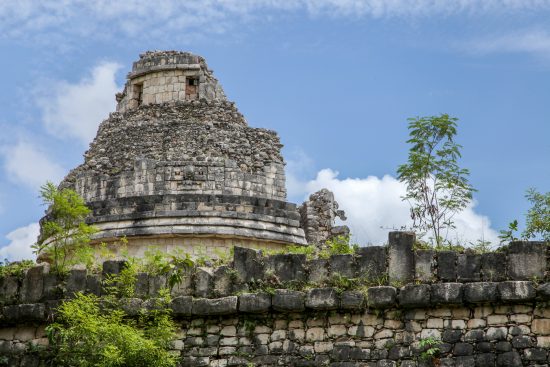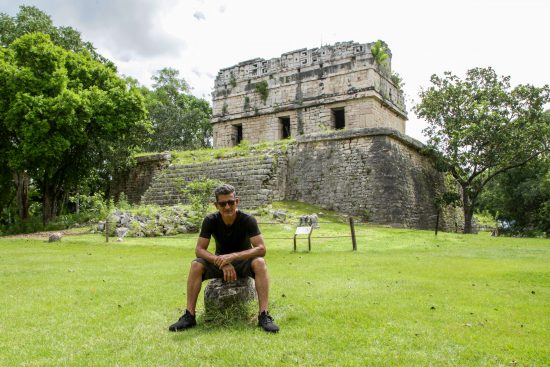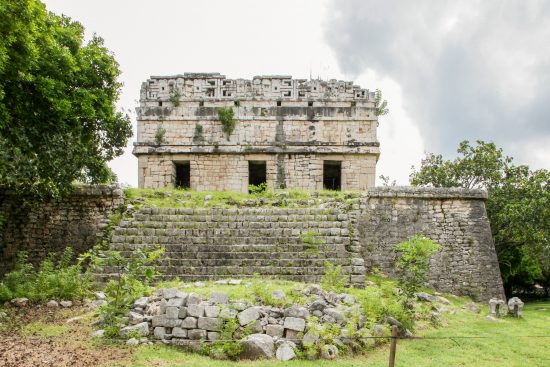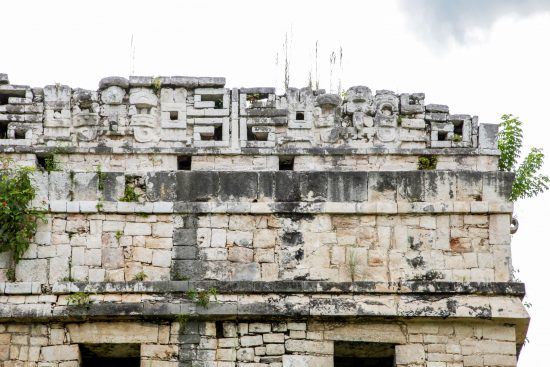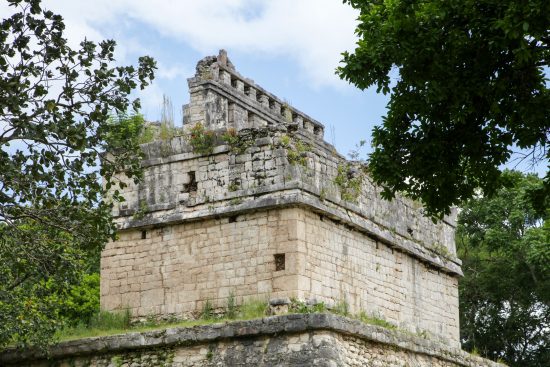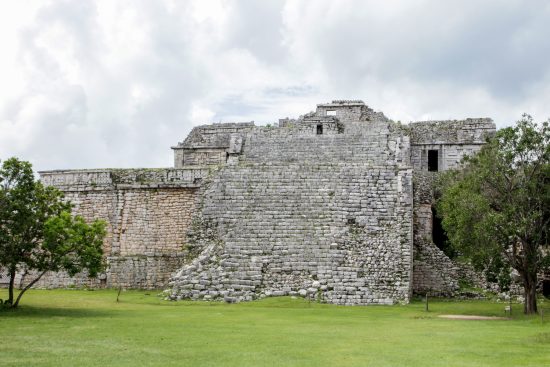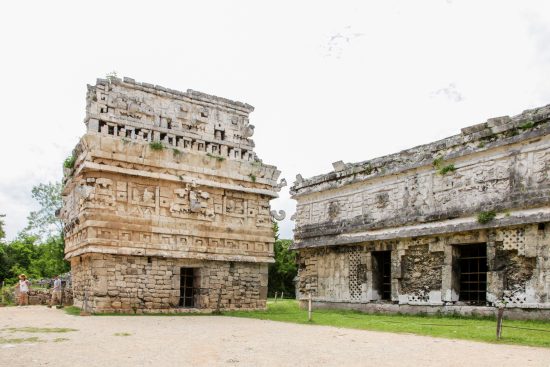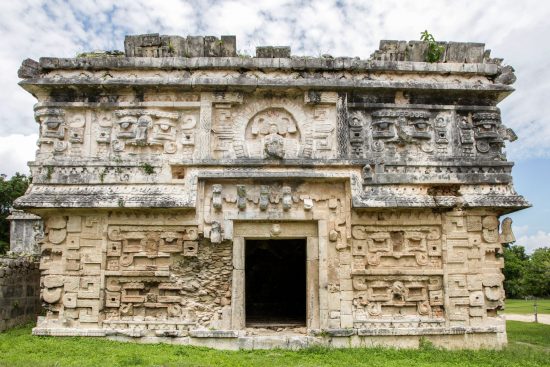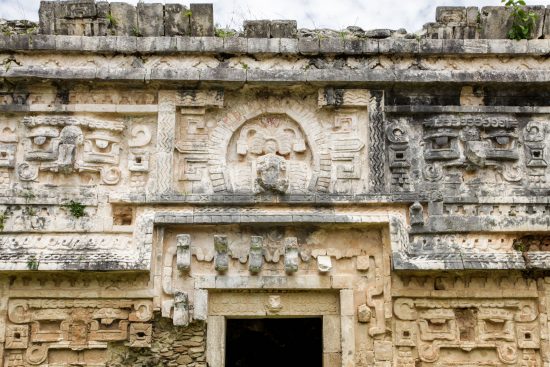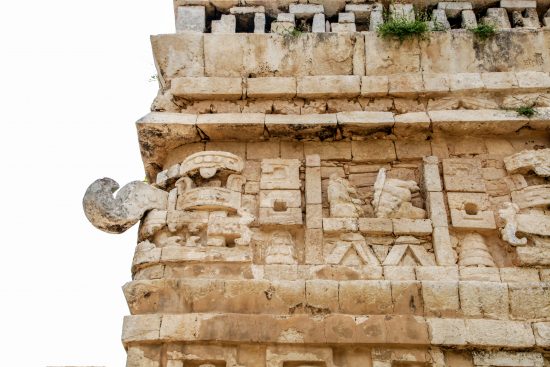Even when he looks like he’s resting, he’s actually working… George Shaw on Chichen Itza, the walk-through Mayan masterpiece…
When I began my professional life as an advertising copywriter straight out of university in the New Romantic era of the mid-1980s, I was just as full of myself as I was full of ideas. Whether writing ads for baby products, financial services, or charitable causes, I always thought of myself as an artist. It didn’t matter if my colleagues referred to what we did as ‘commercial art’ or my leftie friends called me a ‘sell-out artist,’ I was still expected to generate creative concepts on a regular basis that would engage hearts and minds before engaging wallets. As far as I was concerned, all the literary writers I admired did the same, except that they wrote 80,000-word novels while I wrote 80-word ads. So, whenever a client made a ham-fisted attempt at interfering with the sacred conjugation of words I had laboured so hard to craft, I would complain loudly that “Just because the #$@&%*! can write a shopping list doesn’t mean s/he knows how to write.”
Cut to the twenty first century and more fool me. Lists are now a staple of every platform from mainstream news outlets to social media influencers. So, in the spirit of the new Listicle’s Age, here are seven reasons why Chichen Itza – one of the largest pre-Hispanic Mayan cities in Mexico (455-967 AD or CE if you are PC) – is one of the New Seven Wonders of the World.
Prologue
The name Chichen Itza is a Spanish compound name derived from the Mayan words ‘chi’ meaning “mouth,” and ‘ch’en’ meaning “well,” while the name ‘Itza’ refers to the ethnic group who dominated the northern part of the Yucatan Peninsula for over 600 years. The ruined ancient city, a magnet for scholars and tourists, occupies an area of about ten square kilometres not all of it open to the public, nor completely filled with ruins. Chichen Itza received World Heritage listing from UNESCO in 1988. Interestingly, the land on which the ruins stand was privately owned until its purchase by the State of Yucatan in 2010.
The Temple of Kukulkan
The Temple of Kukulkan (detail)
The Temple of Kukulkan (detail)
The Temple of Kukulkan (detail)
The Temple of Kukulkan (equinox)
1. Temple of Kukulkan
Kukulkan is the name of the feathered serpent deity venerated by the Itza people. However, by the time of Chichen Itza’s construction, Kukulkan had become less of a Vision Serpent and more of a symbol of the state’s divinity, not unlike what happened over the centuries at the Vatican (a wholly personal assertion that may ruffle a few Catholics). And just as Paris redux is symbolised by the Eiffel Tower; New York, the Empire State Building; and Sydney, the Opera House, the Temple of Kukulkan stands in for Chichen Itza, at a glance.
Renamed El Castillo when discovered by the Spaniards in the sixteenth century, the great pyramid is believed to have been built along the principle of ‘axis mundi,’ a point of connection between Sky and Earth where the four cardinal points meet at the apex. The pyramid is made up of nine square terraces with stairways along each side leading to a temple at a height of thirty metres; the temple itself being six metres high. There are 91 steps on each side which, when added together with the temple’s base (counted as the last step), add up to 365 equalling the number of days in the Mayan year. The balustrades of the northern stairway are heavily decorated sculptures of Kukulkan that when illuminated by the afternoon sun on certain days in and around the Spring and Autumn equinoxes, create the illusion of a feathered serpent slithering down the pyramid. Sadly, it took someone tumbling down one of the stairs to their death in 2006 for the authorities to restrict any future public access to the pyramid. The tourism gods must have gone crazy.
The Great Ball Court
The Great Ball Court (Upper Temple of the Jaguar)
The Great Ball Court (Pok-A-Tok Hoop)
The Great Ball Court (Lower Temple of the Jaguar)
The Great Ball Court (Bas Relief)
The Great Ball Court (Lower Temple of the Jaguar)
2. Great Ball Court
Not only were the Mayans sophisticated architects, builders, astronomers, and mathematicians, they were also outstanding athletes. Their game of choice was Pok-A-Tok, a fast and often dangerous game akin to a combination of volleyball, basketball, and soccer in which serious injury and death were commonplace. Padded players used their bodies (never their hands) to keep a hard 2.5kg rubber ball in play with the aim of hurling it through a stone hoop. While the game was played for entertainment, at times it also held a symbolic and ritual function; on those special occasions the captain of the losing team would more than likely be decapitated on the court. Teams of slaves were also routinely sacrificed in a not dissimilar (but metaphorical) manner to Canberra’s Prime Ministerial Games every 18 months or so.
The Great Ball Court in Chichen Itza differs from other Mayan courts in its extraordinary size, complex construction, and degree of difficulty faced by players. On its eastern and western walls, there are stone hoops carved with entwined serpents high up. They stand out above bas reliefs depicting players, teams doing combat, as well as ceremonial decapitations. The elevated structure at the northern end of the court is known as the Temple of the Bearded Man, and is echoed by another smaller, elevated temple at the southern end. High on the eastern wall is the Upper Temple of the Jaguar from which the nobility enjoyed a vantage viewing point. Although there are severely degraded frescoes depicting battle scenes inside this temple, they are not available for public viewing. However, on the outer flank of the same wall is the Lower Temple of the Jaguar inside of which there are more decayed wall paintings, damaged, carved columns, and a jaguar throne similar to that found inside the Temple of Kukulkan, although of much more material modesty.’
Temple of the Warriors
Temple of the Warriors (detail)
Temple of the Warriors (detail)
Temple of the Warriors (stelea)
Temple of the Warriors (detail)
Temple of the Warriors (detail)
Temple of the Warriors (1000 columns)
3. Temple of the Warriors
Chichen Itza was built over the course of several centuries, the city expanding according to the political and cultural rule of the day. The Temple of the Warrior, for example, is said to have been constructed in the Late or Terminal Classic period of the 10th century by the invading Toltecs of Central Mexico. Evidence of this can be found in the 200 square columns or ‘stelea’ on the temple’s forecourt, which were carved in low relief and once painted in brilliant colours depicting Toltec warriors. Behind this army of columns resides the temple itself, a large and detailed pyramid consisting of four platforms with spacious patios and halls suggesting a place for large public gatherings. A broad central stairway leads to an open space with more carved pillars, but this time with serpent motifs. Archaeologists believe the pillars were used to hold a thatched roof. Scholars have speculated this area to be where the beating hearts of sacrificial victims were presented as a spectacle to crowds gathered below. Although the literature describes various sculptural pieces at the top of the temple, in particular a sculpture of Chaac Mol, one of the rain gods, unfortunately access to them is denied to the public.
Next to the Temple of Warriors along its southern flank is a colonnade known as the Group of a Thousand Columns, which is made up of more carved pillars that would have once also been used to hold up an extensive roof, perhaps as part of the adjacent marketplace.
The Osario Pyramid
The Osario Pyramid (detail)
The Osario Pyramid (detail)
The Osario Pyramid (detail)
4. The High Priests’ Temple
‘The High Priests’ Temple’? (What, with Vincent Price and Peter Cushing?) Despite the shrill, Hammer Housesque renaming of the Mayan edifice by Edward H. Thompson, the Osario Pyramid derives its name from the communal graveyard or ossuary inside it. In 1895, Thompson excavated skeletal remains, jewellery, and personal effects from a 12-metre-deep cave under the pyramid. Although the communal function of the site has been confirmed by archaeologists for decades, Thompson’s suggestions about high priests and rituals and VIP burial grounds, on the other hand, have never been taken seriously.
The Platform of the Tombs
The Platform of the Tombs
The Platform of the Tombs (detail)
The Platform of Venus
The Platform of Venus (detail)
As the second-largest pyramid in Chichen Itza, the Osario features Toltec and Puuc influences in its design and construction. Standing at a height of 30 feet, there are four stairways on each of its sides that lead to a central temple or sanctuary. As with the similarly looking Temple of Kukulkan, important Toltec symbols of power such as interlaced feathered snakes and human figures decorate the stairways appearing throughout in various bas relief surfaces. Opposite the Osario Pyramid are the Platform of the Tombs and the Platform of Venus. The first of these smaller structures most probably served as storage for bones, while the second was a ceremonial platform from which evidence of human sacrifices has been found.
El Caracol
El Caracol (detail)
El Caracol (detail)
5. El Caracol
It is not a stretch to suggest the Mayans drew the line at designing anything without a right angle in sight. However, the tenth century Observatory Building or El Caracol, meaning ‘snail’ in Spanish, is unusual in the placement of a round-shaped dome on a rectangular platform, both several stories high. The name is derived from the spiralling internal staircase that winds upward like a snail’s shell. El Caracol was an astronomical observatory with windows and doors aligned to track the nightly trajectory of the planet Venus, as well as the sun and moon, and other celestial events. Twenty sightlines remain in the dome and they align with various eclipses, solstices, and equinoxes. An understanding of the cosmos helped the Mayans predict seasonal conditions for better agriculture. As manifestations of various Maya gods the sun, moon, and planets were also focal points on which buildings were positioned throughout Chichen Itza, “tying the city to the gods themselves.” (Julia Miller, Archaelogist).
The Red House
The Red House
The Red House (detail)
The Red House (detail)
6. The Red House
One of the best-preserved buildings in Chichen Itza, the Red House or Casa Colorada in Spanish, may have been an elite residence in the days when its name was the pre-conquest Mayan Chichanchob. Named after the remnants of red paint found on its inner walls, one chamber of the Red House is inscribed with a Mayan date corresponding to 896 AD, as well as decorated with extensive carved hieroglyphics in Mayan-Toltec style describing the rulers of Chichen Itza, fire ceremonies, and blood rituals. Three major doorways leading to the chamber contain glyphs along their lintels. On the outside, with its restrained Puuc façade, the Red House features three masks of the rain god Chaac along its roof comb. Predominantly because of the attached ball court, the building is believed to have been open to the public and used for religious purposes.
The Nunnery
The Nunnery (side)
7. La Iglesia
If you believe that God is in the details, then La Iglesia in the Las Monjas complex is the place to study Mayan art up close. The Central-Yucatan-style, Puuc-constructed Las Monjas or Nunnery in English is dominated by a large, west-facing, steeply stepped platform that reminded the Spaniards of convents back home. Although the tenth century building atop the Nunnery platform was a governmental palace, the misguided name remained. The eastern flank of the platform mirrors the ornate carvings of La Iglesia, its smaller nearby neighbour.
La Iglesia
La Iglesia (detail)
La Iglesia (detail)
Originally a Mayan temple of the seventh century, La Iglesia or The Church is a small building on the eastern side of the Nunnery which features the largest most defined concentration of carvings and hieroglyphics found on any single structure in Chichen Itza; the glyphs frequently mentioning a ruler known as Kakupakal. Consisting of a single interior space with only one opening and faint traces of the original plaster throughout, La Iglesia saves its best for the outside. The exterior frieze and roof comb are elaborately decorated with various Chaac rain god masks, zig zag lines, geometric and serpentine designs, and animals such as an armadillo, snail, crab, and tortoise whose job is to hold up the sky, as the earthly embodiments of Mayan gods. Masks of Chaac are also found on the four corners of La Iglesia. The mask of a long-nosed, curly moustache god is Tlaloc rather than Chaac and, above the entrance, is a cross-legged figure with arms crossed was is assumed was a person of influence, and most likely the ruler Kakupakal.
Epilogue
The physical beauty of Chichen Itza is undeniable; its historical place and cultural value indisputable. As an archaeological site, Chichen Itza bears witness to a robust civilization that flourished for centuries in a natural environment that, while not wholly inhospitable, is very challenging. If it may be possible to anthropomorphise climate, the heat and humidity on the day I explored Chichen Itza, for example, were nothing short of heinous and vindictive (to paraphrase Don DeLillo).
Despite these harsh conditions, the Mayans were able to design and build spectacular structures and cities without the aid of metal tools, the wheel, or domesticated beasts of burden. They also created the only fully-fledged writing system in the Americas, which is in evidence in four out of forty codices that escaped Spanish burning in the sixteenth century. And while the constructed myth about the Mayan calendar suggesting the end of the world in 2012 was eventually nothing more than overwrought filmic nonsense, the Mayans’ knowledge of mathematics and astronomy was as rock-solid as their monuments to Sky and Earth. As to the Mayans’ bloodlust, Mel Gibson’s 2006 film Apocalypto unfortunately did little to dispel that historical/hysterical myth. However, based on facts from the real world, it is no wonder Chichen Itza is considered a marvel of the ancient world.
